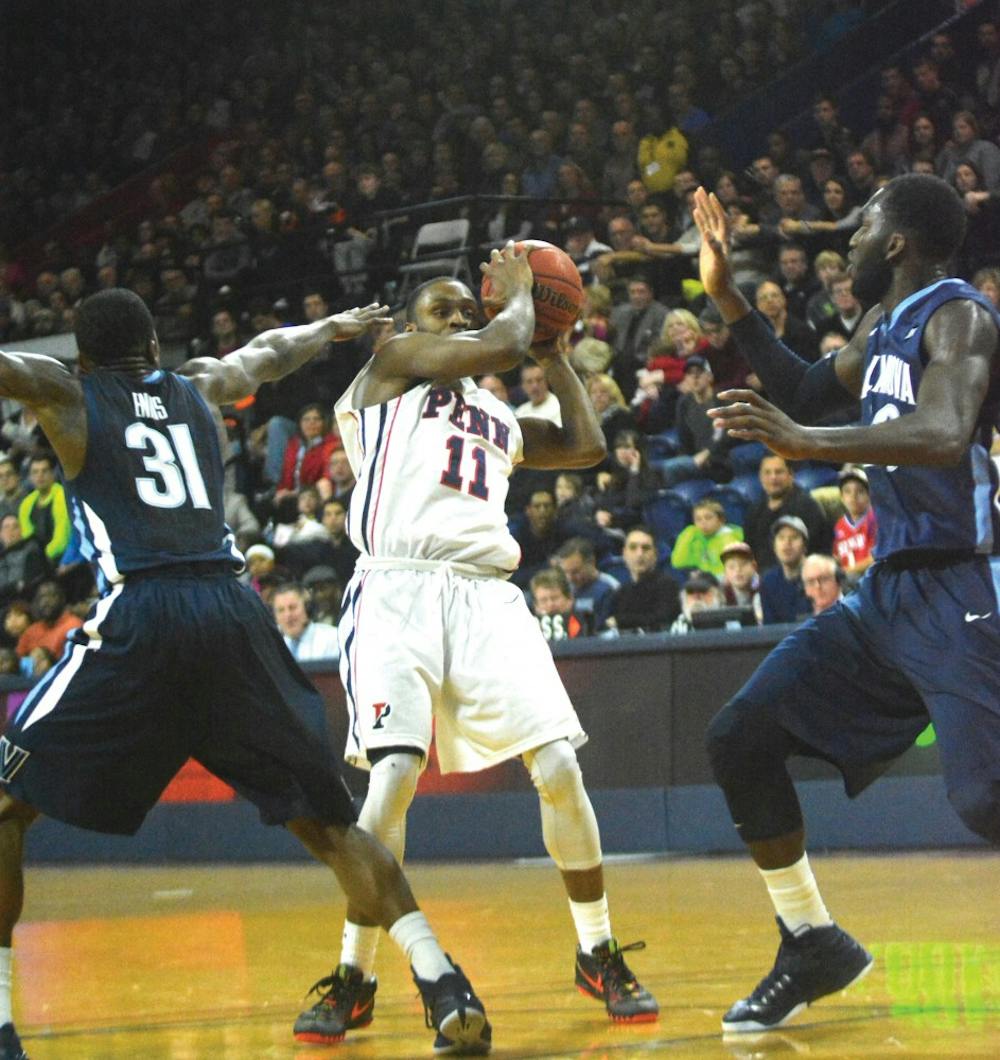
With Penn basketball approaching the midway point in its season, fans and opposing coaches alike seem to think they know what the squad is made of.
But the advanced stats tell the whole story. Is anyone surprised that Tony Hicks finishes more possessions for the Quakers than any other player? No. But there’s more than meets the eye. Here’s what has stood out through the first half of the year:
The Big Hyphen is dominating the offensive glass
Darien Nelson-Henry has improved tremendously on the offensive glass this year, hauling in 13.1 percent of all available offensive rebounds, after snagging just 9.3 percent last season. While the number alone might not mean much, consider that Nelson-Henry’s mark ranks second in the Ivy League and he’s one of only seven players — including teammate Greg Louis — to corral at least 10 percent of his offensive rebound opportunities.
One freshman has shone bright
Freshman forward Mike Auger has easily been the most impressive Penn freshman this season, and the stats certainly support it. Though he’s been limited to only seven games on the season due to a foot injury, Auger has been incredibly efficient by just about every metric.
The forward leads the team in both offensive and defensive rating and barely edges out Nelson-Henry for Penn’s top player efficiency rating at 19.9. He hasn’t had to carry the offense to quite the same extent as Nelson-Henry and Tony Hicks, but Auger has proven himself valuable in his minutes so far.
The guards could use some more polishing
Taking over the starting point guard position as a freshman isn’t supposed to be an easy task. College offenses operate a lot differently and compete with — and against — an entirely different level of talent than in high school. So it should surprise no one that freshmen Antonio Woods and Darnell Foreman have been among the least efficient Penn players thus far.
Woods and Foreman have both certainly had bright spots this season (see Antonio Woods’ second-half three-pointers against Villanova), but they’ve also struggled shooting from the field (38.3 percent and 28.1 percent, respectively). The assist and turnover statistics aren’t too pretty, and both have posted PERs under 10 (the average is 15). It’s tough to succeed when put in the driver’s seat of a college offense from day one, and that’s been the case for Penn.
The Quakers rely on Tony Hicks (and always have)
Who finishes a higher percentage of his team’s plays — either by field goal attempt, turnover or trip to the free throw line — than any other player in the Ivy League? Brown’s Leland King. But if I were asking this question about either of the past two years, the answer would be Tony Hicks. And this year, Hicks ranks second at 30.8 percent.
It’s hard to say whether this is good or bad for Penn — most teams tend to have a player who dictates the flow of the offense — but it’s somewhat astonishing that he’s been at (or near) the very top of the list in each of his three seasons.
But Hicks is distributing more than ever
Before the season, there was plenty of discussion of the junior guard’s off-season workout regimen and change in jersey number, but the biggest change has been in his assist percentage. While on the floor, 29.3 percent of his teammates’ field goals come off of assists from Hicks, outpacing the junior’s career mark of 24.4 percent.
With Hicks shooting more efficiently — a career-high 42.7 percent mark — and distributing unlike ever before, the Quakers have been more effective offensively with the junior on the floor than they have been in either of his two prior seasons.
The Daily Pennsylvanian is an independent, student-run newspaper. Please consider making a donation to support the coverage that shapes the University. Your generosity ensures a future of strong journalism at Penn.
DonatePlease note All comments are eligible for publication in The Daily Pennsylvanian.








